I have been growing azarina at my dacha for several years now. During this time, I managed to study well and even fall in love with this plant for its extraordinary appearance, rapid growth and versatility.
And at the first meeting, azarina greatly disappointed me and I even wanted to pull out these thin sprouts with small, heart-shaped leaves. I had no hope that these inconspicuous shoots would be able to grow and entwine the arbor near which they were planted.
To my surprise, this steeplejack began climbing the supports so quickly that I quickly changed my mind. Over time, I learned that there are different types of azarins, and that they are used not only for vertical gardening. but also as hanging plants, grown on hills, in rockeries and as indoor plants.
Such different types of azarina
Our gardeners grow several types of this plant.
Azarina climbing
The most famous among our summer residents, many even think that this is the only thing that happens. It has a thin, very long (up to three meters) and well-branched stem. The flowers are small (no more than three centimeters) most often blue, but there are also white, purple, and pink.
When planted in March, it can bloom in mid-June and bloom until frost. The leaves are small, but it is with the petioles of these leaves that she clings to any support she can reach.
These vines are used not only for planting near fences and gazebos, but also for growing in flowerpots. In such pots and flowerpots you only need to insert a decorative ladder or other support that the plant will weave around.
Azarina reddish
A liana growing up to two to three meters, the leaves and flowers are slightly larger than those of its climbing relative. Flowering begins in July and ends only in autumn.
After flowering, it forms fruits with seeds, which must be collected and sown the next year in February or March. It prefers to grow in partial shade and requires frequent watering.
In the fall, azarina can be dug up, transplanted into a pot and brought indoors for the winter.However, in room conditions, with excess heat and lack of light, the vines usually become thinner and elongated. Therefore, in the spring it is better to cut them off at the root and allow young shoots to grow.
In this case, flowering will occur much earlier, but flower growers rarely use this method, preferring to grow azarina from seeds as an annual.
Azarina antirhiniflora
It has relatively short stems, growing up to 1.2 -!.6 meters. It is not very advisable to plant such vines near a gazebo or fence; they are usually used to decorate balconies or plant in hanging baskets.
The leaves are hairless, heart-shaped, the flowers are small (1.5 - 3 cm) somewhat reminiscent of snapdragons, located on highly branched shoots. It blooms continuously all summer and autumn until frost hits.
Azarina Barclay
It is grown both in the garden and at home. When planted outdoors, the vines grow up to 3.5 meters in height and are highly branched. Great for landscaping gazebos and verandas. The leaves and flowers of this species are the largest, up to 6–7 cm. It blooms from mid-July until frost; the seeds ripen in September. If you want to collect them, tie the fruits with gauze, otherwise the seeds will spill out and scatter.
Seedlings grow slowly, so it is better to grow Maurandia as a biennial. Seeds are sown in July, brought into the house for the winter and placed on the windowsill, and in the spring they are planted near fences, arches or gazebos.
When planted in a room, Maurandia certainly does not grow to the same size as in the garden. It can be grown on a windowsill for several years, but in the spring it should be cut off at the root so that young shoots grow and the plant does not lose its decorative appearance.
Azarina prostrate
The name of this type of azarina (or climbing gloxinia) speaks for itself; the best place for it is in slides, rockeries or flowerpots. Its dark green shoots with small yellow flowers look very harmonious among the stones.
Azarina prostrata can withstand slight frosts, but it definitely won’t be able to survive our winters, so it is cultivated as an annual.
The stems of climbing gloxinia take good cuttings if you planted a flower winter in a room, then in the spring you can take cuttings and root them. But still, the main method of propagation is seed. In autumn, seed pods form on the vines, from which it is not at all difficult to collect seed material.
They begin to sow seeds in March or even February. Seedlings germinate at a temperature of 18 - 20º, grow them at a lower temperature on a bright, cool windowsill. They are planted in the garden at the end of May, flowering begins four months after germination and, like all azarins, it blooms until late autumn.
This type of Maurandia prefers shaded areas with moist, but not swampy soil. When grown in hanging baskets, hydrogel must be added to the soil to retain moisture.
Growing Asarina climbing from seeds
I would like to share my experience of growing climbing azarina from seeds, since the seeds of this particular species are most often found in stores. Growing Maurandia is not at all difficult if you have already grow flower seedlings, then it will not be difficult for you. It is better to sow seeds at the end of February or at the beginning of March.
1. Soil preparation. To prepare the soil mixture, buy flower soil in the store, mix it with sand and turf soil in approximately equal proportions. Fill a plastic container with the resulting mixture and spill it with a solution of potassium permanganate to disinfect the soil.
2. Sowing. The seeds are quite small, but if desired, they can be spread out, and without such a desire, simply scatter them over the surface of the soil and lightly press them into the soil with the palm of your hand. According to the instructions, after sowing, the seeds are sprinkled with calcined sand. I don’t do this and the shoots still turn out quite friendly.
3. Conditions for seed germination. Cover the container with film or simply place it in a bag. Seeds germinate within two to three weeks at a temperature of 18 - 20º. You can place the container on the windowsill, there are quite suitable conditions for germination.
4. Caring for seedlings. After sprouts appear, remove the film. Azarina seedlings are very thin and tender; water carefully, without overwatering. Excessive moisture may cause a “black leg” to appear. If the disease begins to appear, immediately remove the fallen sprouts and water the seedlings with potassium permanganate. Before picking, no fertilizing is needed, only careful watering.
5. Picking. When two or three true leaves appear, the seedlings need to be planted in cups. I pick two sprouts into one glass, then the bushes will be larger. Subsequently, I plant them in open ground.
6. Feeding. Two weeks after picking, feed the plants with any flower fertilizer and continue feeding until planting in the ground once every two weeks.After planting, give nitrogen fertilizing once or twice, and before flowering, be sure to fertilize with phosphorus and potassium, then flowering will be more abundant.
7. Pinching. When the shoots grow to 7 - 8 cm, start pinching them. Pinch several times, then the bushes will be lush and bushy, like in the photo. Some gardeners put supports in cups so that the vines can climb along them. Keep in mind that they can become so tangled that it will be difficult to detach the plants from these supports.
8. Planting in open ground. When frosts have passed, azarina is planted in the garden. Maurandia loves sunny, draft-free places. The soil is loose and permeable; stagnation of water depresses the plant. In the southern, hot regions, shade during the midday hours will not hurt, and then you need to water more often.
Almost all recommendations for growing azarina contain a warning that the plant is affected by aphids. In all my many years of practice, I have never seen aphids on Maurandia vines, but even if the pest appears, it can be easily dealt with using chemicals. These are not cucumbers or tomatoes that have to be saved folk remedies or biological products.
Azarina in garden design
Azarina is not only a beautiful plant, but also a universal one; it is planted in different parts of the garden, in a wide variety of varieties. Maurandia can be used for vertical gardening, as an ampelous and even ground cover plant, and grown on balconies and loggias.
Most often, the flower is planted near arbors, fences, arches or some other supports. (how to make supports for climbing plants look at here) Be sure to take into account that the plant clings to supports with leaf petioles, just like clematis.
Only the leaves of azarina are small and they can catch on a wire or twine if their diameter is not very large.
Barclay's azarina is better suited for landscaping gazebos and fences than other types; it grows very quickly and can cover a large area.
Azarina planted near the gazebo will bloom all summer and provide a lot of shade.
The plant quickly entwines garden arches.
To grow in pots and flowerpots, the plant requires support. They can come in a variety of shapes and designs. In the photo you see supports made in the form of a sphere and a pyramid. The sphere is made of aluminum wire in white insulation, and the pyramid is made of ordinary reeds. Both structures, to give additional rigidity, are braided with a thin fishing line, which the azarina clings to with pleasure.
And these are the same plants a month and a half later. Unfortunately, there was no place for them in the sun and they stood in the deep shadow all the time. This is why there are practically no flowers on them, but this is fully compensated by the original green ball and the same green column rising from the flowerpot. Two plants are planted in both flowerpots.
Azarina grows well in flowerpots. Just when planting, do not forget to add hydrogel to the pots and regularly feed the plants. All flowers grown in flowerpots require much more attention than those growing in the ground.
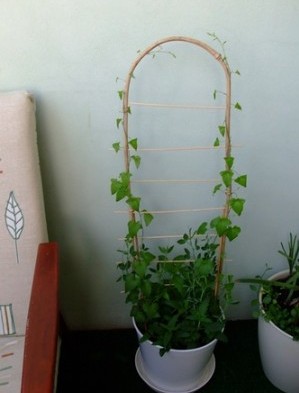 |
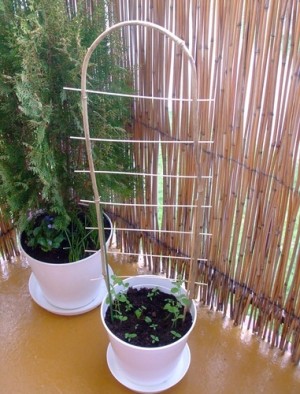 |
This option with a ladder is more suitable for balconies and loggias.
I hope you also liked this plant and will begin to grow it in your dachas. And if you have already grown azarina and have something to tell about this flower, share your experience in the comments.
Continuation of the topic:
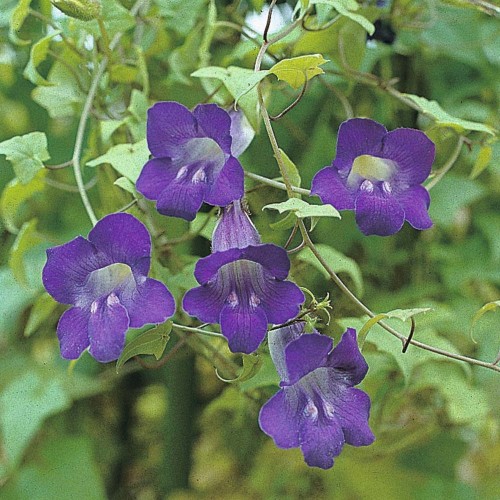
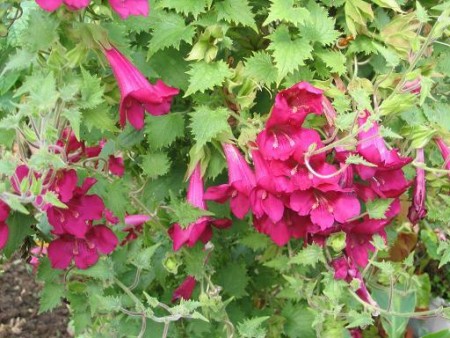
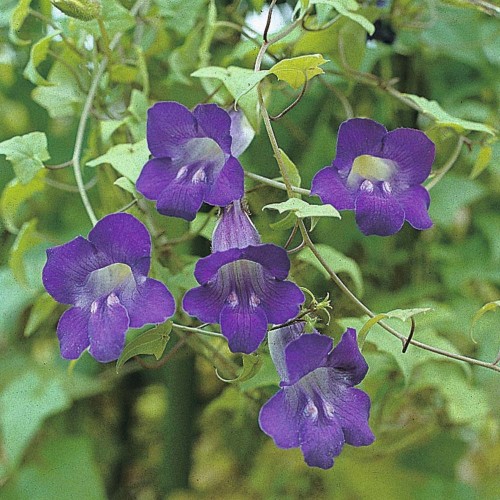

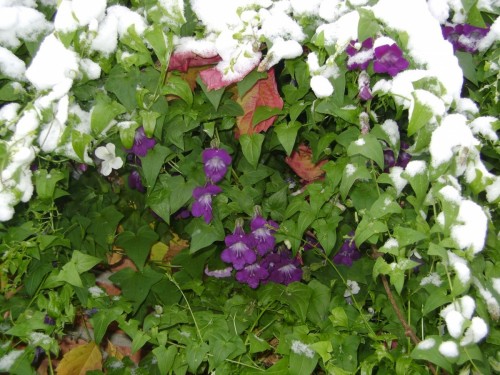
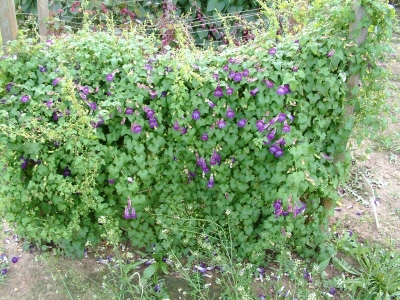
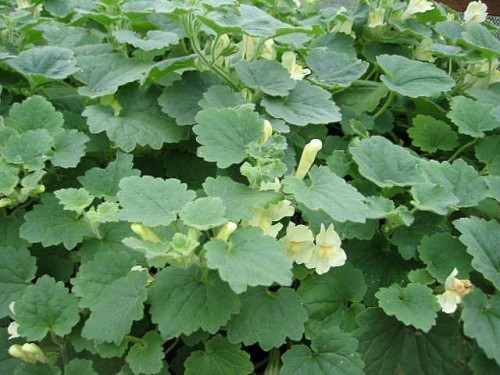
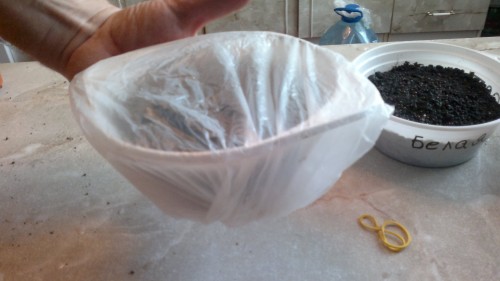
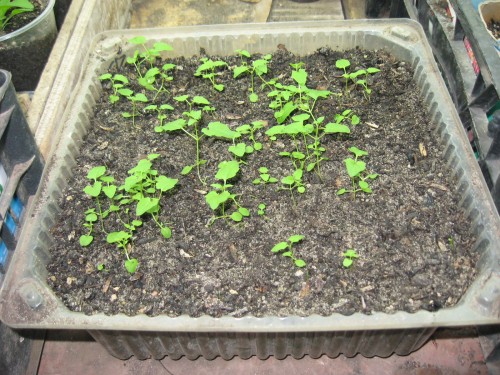
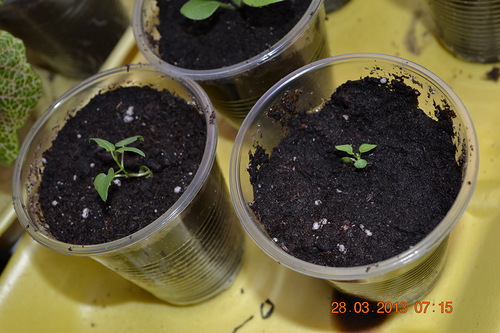
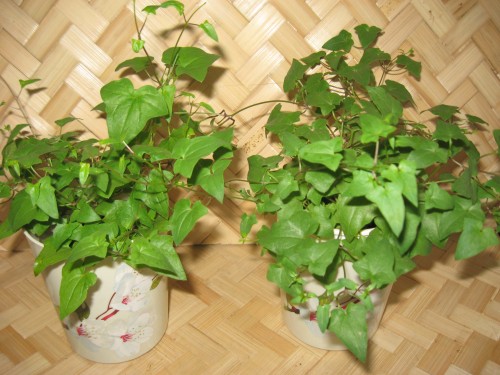
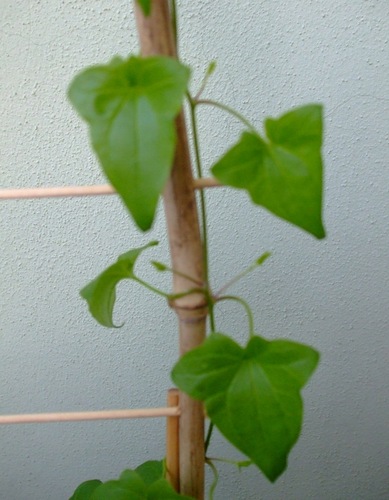
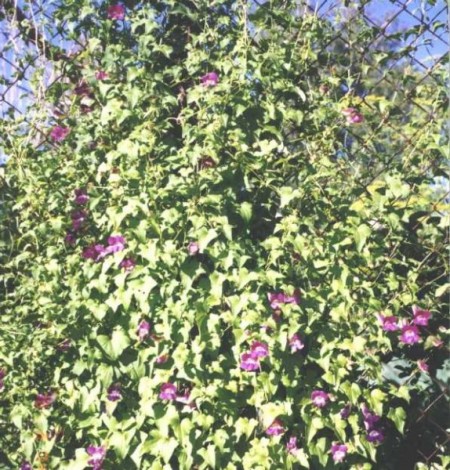

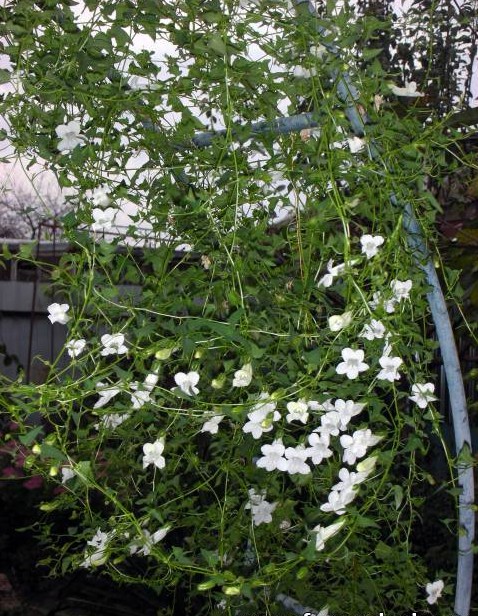
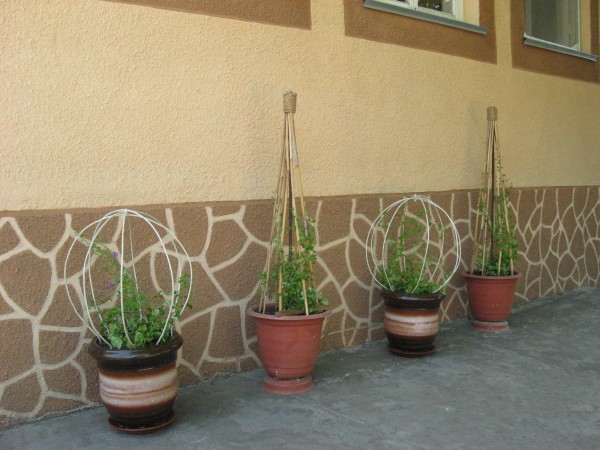
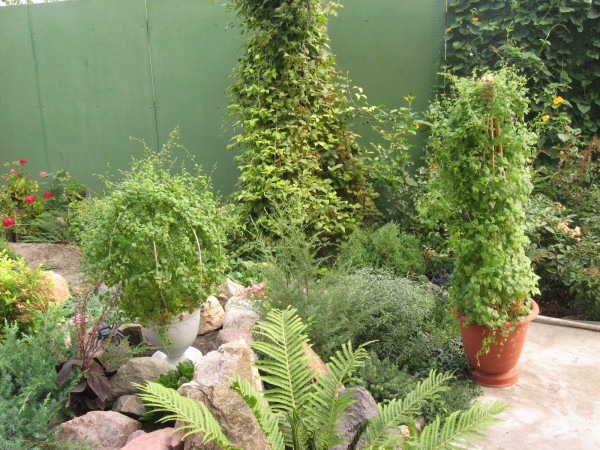
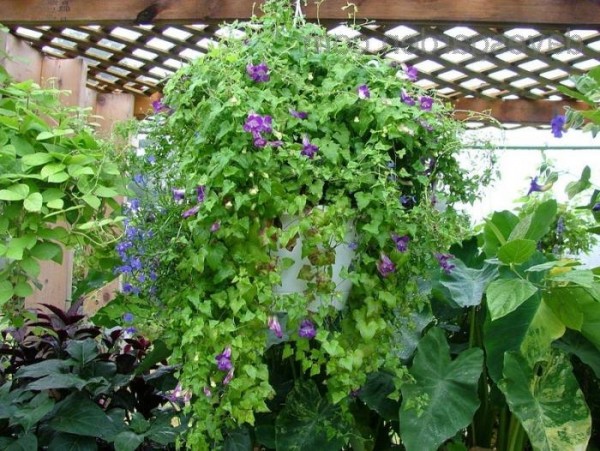
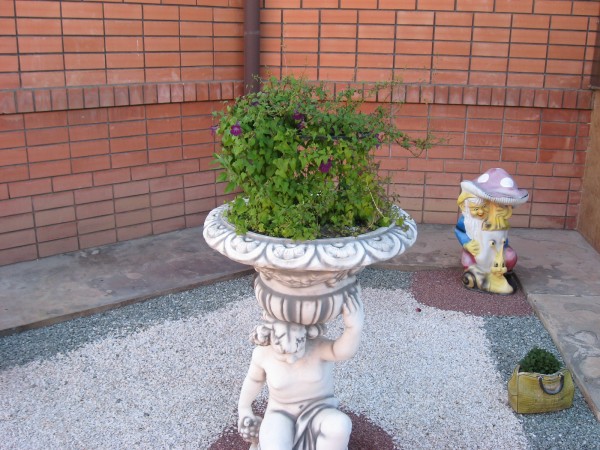

 (12 ratings, average: 4,67 out of 5)
(12 ratings, average: 4,67 out of 5) CUCUMBERS NEVER GET SICK, I'VE BEEN USING ONLY THIS FOR 40 YEARS! I SHARE A SECRET WITH YOU, CUCUMBERS ARE LIKE THE PICTURE!
CUCUMBERS NEVER GET SICK, I'VE BEEN USING ONLY THIS FOR 40 YEARS! I SHARE A SECRET WITH YOU, CUCUMBERS ARE LIKE THE PICTURE! You can dig a bucket of potatoes from each bush. Do you think these are fairy tales? Watch the video
You can dig a bucket of potatoes from each bush. Do you think these are fairy tales? Watch the video
 How our fellow gardeners work in Korea. There is a lot to learn and just fun to watch.
How our fellow gardeners work in Korea. There is a lot to learn and just fun to watch. Eye trainer. The author claims that with daily viewing, vision is restored. They don't charge money for views.
Eye trainer. The author claims that with daily viewing, vision is restored. They don't charge money for views. A 3-ingredient cake recipe in 30 minutes is better than Napoleon. Simple and very tasty.
A 3-ingredient cake recipe in 30 minutes is better than Napoleon. Simple and very tasty. Therapeutic exercises for cervical osteochondrosis. A complete set of exercises.
Therapeutic exercises for cervical osteochondrosis. A complete set of exercises. Which indoor plants match your zodiac sign?
Which indoor plants match your zodiac sign? What about them? Excursion to German dachas.
What about them? Excursion to German dachas.
I have been growing azarina in my yard for several years now. In fact, this flower can be used in many ways to decorate an area. I highly recommend it to everyone who has not yet planted this weed in their dacha.